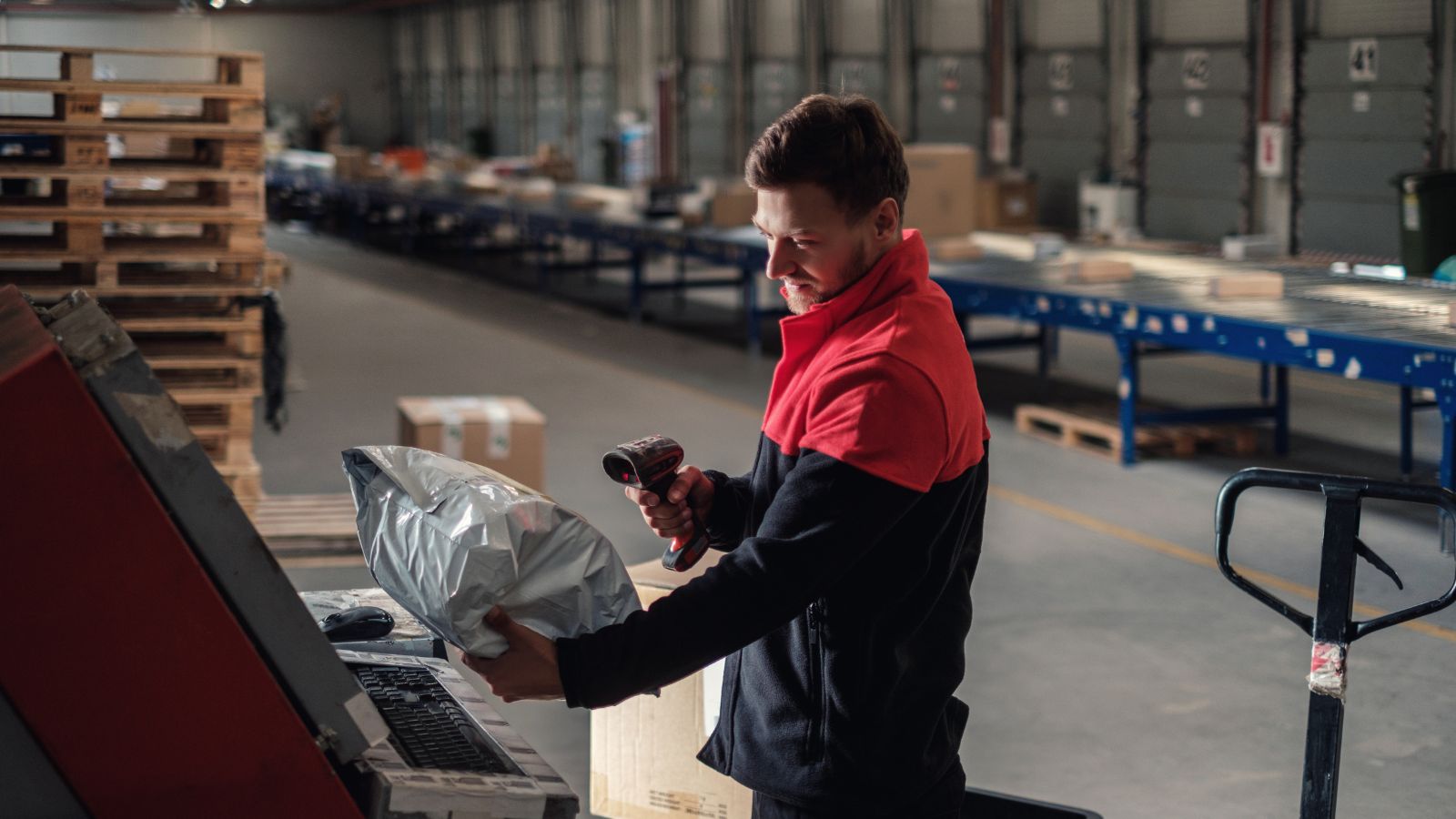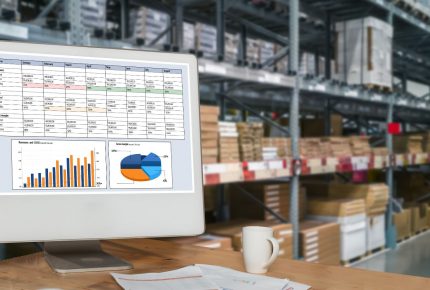Pick and Pack Services Explained: Streamlining Order Fulfillment

Pick and pack services handle selecting individual items from inventory and packaging them for shipment. They help businesses speed up order fulfillment, minimize errors, and manage customized orders efficiently.
These services play a big role in eCommerce and warehouse operations. They support both small and large orders, offering options like bundling, kitting, and custom packaging.
By streamlining the packing process, warehouses pick and pack more efficiently, which lowers shipping costs and helps meet customer expectations. The fulfillment process feels a lot smoother with fewer mistakes.
Many companies rely on pick and pack services to scale shipping operations without hiring more staff. This way, businesses can focus on growth while their orders get processed quickly and correctly.
Pick and Pack Services: Streamlining Order Fulfillment
What Are Pick and Pack Services?
Pick and pack services are a cornerstone of modern warehouse operations. Staff select products and pack them up to fulfill specific customer orders, which helps minimize errors and speed up order processing.
Definition and Core Functions
Warehouses pick and pack by selecting items from inventory based on each order, then packing them for shipment. When a customer places an order, staff locate each product, gather the right quantity, and prep it for shipping.
The goal? Make sure orders are accurate and complete. Picking methods might differ, but accuracy and speed are crucial to minimize errors and avoid delays.
After picking, items get packed securely to protect them during shipping. It’s all about getting the right stuff to the right customer, quickly.
Types of Pick and Pack Processes
Warehouses use a few different approaches to handle pick and pack, depending on layout and order volume:
- Batch Picking: Staff pick similar items for multiple orders at once.
- Zone Picking: Each warehouse zone handles a part of the order.
- Wave Picking: Combines batch and zone picking for more complex workflows.
Each method tries to balance efficiency and accuracy. Barcode scanning and automation often support these processes to minimize errors and speed things up.
Industry Applications
Pick and pack services show up in all kinds of industries that deal with different product types and quantities. The usual suspects:
- Ecommerce: Handles multi-SKU orders with lots of combinations.
- Retail: Fulfills small customer orders fast.
- 3PL Providers: Offer flexible fulfillment process solutions for clients.
- Manufacturing: Ships custom or assembled orders.
Key Steps in the Pick and Pack Process
The pick and pack process covers several steps to make sure orders get fulfilled accurately. It involves receiving goods, managing inventory, picking the right items, and prepping them for shipping with proper packaging and labeling.
Receiving and Inspection
When new inventory shows up, staff receive and inspect it. They check products against purchase orders to confirm quantities and quality.
If something’s damaged or wrong, they report it right away. Barcode scanning logs inventory into the Warehouse Management System (WMS), keeping stock levels updated in real time.
Proper receiving helps avoid mistakes later in the fulfillment process. Only verified items go into storage and get picked for orders.
Inventory Storage and Management
Organized storage is key for quick, accurate picking. Items are stored by size, popularity, or category, often in bins or on shelves.
Warehouse Management Systems track inventory locations, so staff know exactly where each SKU lives. This cuts down on search time.
Regular cycle counts and system updates keep stock levels accurate, helping prevent overselling or stockouts.
Order Picking Techniques
Order picking is when staff select products for an order. Picking methods vary based on setup and volume. Barcode scanners and mobile devices guide pickers, boosting accuracy and speed during order processing.
- Single Order Picking: Pick all items for one order before moving on.
- Batch Picking: Pick similar items for multiple orders at once.
- Zone Picking: Pick items from designated zones, then combine them.
Packing and Labeling Procedures
After picking, items get packed into containers. Packaging needs to protect products but not waste material.
Labeling matters a lot: shipping labels, barcodes, regulatory info. Labels come from the WMS and match order details.
Good packing and clear labeling minimize errors and help customers get what they ordered, intact.
Technology and Integration in Pick and Pack Fulfillment
Successful pick and pack fulfillment leans on technology to manage inventory, speed up the fulfillment process, and connect systems. Warehouse management systems, automation, and software integrations help businesses process orders faster and with fewer errors.
Order tracking gives everyone a clear view of what’s happening, which keeps customers in the loop.
Warehouse Management Systems (WMS)
WMS organizes inventory and guides staff through picking and packing. These systems track stock in real time, update inventory after every order, and manage storage locations for fast retrieval.
Features like task prioritization and route optimization make things smoother. WMS also integrates with shipping carriers and e-commerce platforms like Shopify, Amazon, and WooCommerce, syncing orders automatically and improving accuracy.
Automation and Barcode Scanning
Warehouses use barcode scanners, conveyor belts, and even robotic arms for pick and pack. Barcode scanning lets workers verify items by reading labels, so the right product gets packed for each order.
Automation means warehouses can handle more orders with less manual work. It connects directly to the WMS for instant inventory updates, validating every step. Combining scanning with automation boosts efficiency in busy fulfillment centers.
Integration with E-commerce Platforms
Connecting with e-commerce platforms like Shopify, Amazon, and WooCommerce is essential for smooth pick and pack services. Orders flow right into the warehouse system, cutting out manual entry and reducing mistakes.
This integration keeps inventory and order updates synced across all sales channels. It also helps manage returns and cancellations quickly. Real-time stock levels and order status updates make the fulfillment process more reliable.
Order Tracking and Visibility
Order tracking tech lets businesses and customers see where an order stands, from warehouse to doorstep. Managers can watch dashboards to spot bottlenecks and tweak workflow.
For customers, tracking updates mean fewer calls about order status. Real-time inventory tracking linked to orders helps avoid overselling and keeps everyone informed.
Optimizing Accuracy, Efficiency, and Scalability
Great pick and pack services need precise order handling, flexibility for different products and volumes, and the ability to grow with the business. Quality control and good processes improve accuracy, while adaptable systems handle all kinds of orders efficiently.
Order Accuracy and Quality Control
Order accuracy comes from clear picking strategies and solid quality checks. Barcode scanning or RFID verifies each item before packing, which helps minimize errors.
Quality control means double-checking orders, inspecting packaging, and confirming shipments match requests. This cuts down on returns and keeps customers happy.
Regular staff training and updated procedures keep accuracy high. When businesses stick to these controls, error rates can drop sharply, sometimes from 5% to under 1%.
Handling Different Product Types and Order Volumes
Pick and pack services need to adapt to all sorts of products: different sizes, weights, and fragility. Fragile stuff needs special care, while bulk goods need smart space use.
Order volume affects the picking method. Small, frequent orders work best with piece picking; big orders need batch or wave picking. Picking the right method shortens fulfillment time.
Good warehouse design, with zones for product types, helps staff find things faster and reduces mis-picks. Inventory management tools track stock and reorder points, no matter the product variety or volume.
Scalability for Business Growth
Scalability means the pick and pack process can handle more orders without slowing down or making more mistakes. Automated systems, like conveyor belts and sorters, let warehouses grow without hiring tons more people.
Cloud-based software provides real-time updates and smarter scheduling. This helps during peak seasons or when order volumes spike.
Flexible staffing, like bringing in temps during busy times, lets businesses handle demand without permanent costs. Scalability keeps the customer experience strong, even as order volume climbs.
Shipping Solutions and Delivery Options
Shipping solutions give businesses different ways to move products, balancing speed, cost, and reliability. Delivery options include various couriers, shipping speeds, and methods to minimize errors.
Picking the right shipping approach helps make sure orders show up on time, without extra costs or mistakes.
Shipping Methods and Couriers
Shipping methods depend on package size, destination, and urgency. Common options: curbside delivery, terminal pickup, door-to-door, and door-to-port for international orders.
Couriers are crucial for on-time delivery. Big carriers offer tracking and lots of options—ground, air, freight. Some specialize in things like liftgate delivery for heavy stuff or express shipping for urgent needs.
Choosing a courier comes down to package type, destination, and budget.
Standard and Same-Day Shipping
Standard delivery takes a few days and works for most products. It’s cost-effective and reliable for small to medium packages.
Same-day shipping is for urgent orders. It needs nearby warehouses and fast order processing. It costs more, but customers love getting their stuff instantly.
Businesses offering same-day shipping need tight inventory control and close coordination with couriers.
Reducing Shipping Errors
Shipping errors, such as wrong labels, missing paperwork, bad packaging, cause delays and extra costs. Warehouses pick and pack with precision to minimize errors.
To minimize errors, pick and pack services use scanning, accurate labeling, and solid packaging. Real-time inventory tracking and order verification make sure the right stuff goes to the right place.
Proper training and quality checks help prevent mistakes, so customers get their packages without hassle.
Value-Added Pick and Pack Services
Value-added pick and pack services go past basic order picking and packing. They add steps that improve the fulfillment process, make products look better, and boost customer satisfaction.
Extras like custom packaging, kitting, and personalized support tailor the fulfillment process to specific business needs.
Custom Packaging and Branding
Custom packaging lets businesses create a memorable unboxing experience and reinforce their brand. Think branded boxes, custom inserts, or special wrapping.
Using custom packaging in pick and pack fulfillment services protects items and creates a professional image. It also helps with marketing; packages are instantly recognizable.
Fulfillment centers offering this service can handle all sorts of packaging sizes and materials. This works for both B2B and B2C orders, making sure each shipment matches branding and product needs.
Kitting and Assembly
Kitting means grouping related products into one package before shipping. Assembly might involve putting together components, like subscription boxes or product bundles.
Kitting and assembly as part of pick and pack services streamline order fulfillment. They save time for businesses and customers by delivering ready-to-use sets instead of loose items.
Fulfillment providers customize kitting services for complex orders, whether for B2B bulk shipments or direct-to-consumer sales. This flexibility helps minimize errors and returns, making the supply chain run smoothly.
Customer Service and Satisfaction
Customer satisfaction sits at the heart of most warehouses’ pick and pack fulfillment providers. Their teams double-check orders and handle packaging with care, aiming to minimize errors that could cause delays or damaged products.
Good customer service means real-time inventory updates and quick problem-solving. Support gets tailored to each client’s workflow, whether that’s managing returns or handling subscription box deliveries.
When fulfillment centers prioritize service, they build trust and loyalty. That’s what keeps people coming back and talking about the brand in a positive light.
Choosing a Pick and Pack Fulfillment Provider
Businesses have to weigh several factors when picking a pick and pack fulfillment provider. They should check if the provider can customize packaging, support kitting and assembly, and deliver on customer service.
Integration with existing systems, like ERP software, matters a lot for real-time tracking and inventory management. A solid provider will handle both B2B and B2C order processing needs, which is honestly non-negotiable these days.
Companies also want providers who’ve worked with similar products and order volumes. Transparent pricing and flexible solutions help make sure the fulfillment process lines up with business goals.
Frequently Asked Questions
Pick and pack services help businesses process orders faster and more accurately. These services connect with online stores, manage costs through different pricing methods, and support the handling of returns and exchanges.
What are the primary advantages of outsourcing pick and pack services?
Outsourcing lets experts handle order picking, packaging, and shipping so businesses save time and resources. This approach helps minimize errors and speed up delivery, which keeps customers happy.
How do pick and pack services integrate with e-commerce platforms?
Most warehouses’ pick and pack services connect directly to e-commerce platforms through software. That allows for automatic order updates, real-time inventory tracking, and a smoother fulfillment process without all the manual headaches.
What criteria should be considered when choosing a pick and pack service provider?
Businesses should look at accuracy rates, fulfillment process speed, tech integration, customer support, and pricing. It’s also smart to check if the provider can scale as your business grows.
Are there different pricing models for pick and pack services, and how do they work?
Yes, pricing depends on the number of items picked, packed, and shipped. Some providers charge a flat fee per order, while others use per-item fees or monthly plans. There’s no one-size-fits-all.
What is the typical turnaround time for order fulfillment with pick and pack services?
Turnaround times vary, but many providers offer same-day or next-day shipping. Speed depends on order volume, warehouse location, and the specifics of your service agreement.
How do pick and pack services handle returns and exchanges?
Warehouses’ pick and pack teams handle returns by inspecting each item as it arrives back. They update inventory right away and restock anything that’s still in good shape.
When customers want exchanges, these services prep and ship replacements fast. That way, the fulfillment process keeps moving and order processing stays smooth, helping minimize errors and keep customers happy.
Nebraska Warehouse One-Stop-Shop | Technology Enabled 3PL Value-Added Services Warehouse | Freight Broker | Logistics
Nebraska Warehouse doesn’t just help to facilitate your shipments, but we are truly a one-stop-shop solutions provider. Our services include:
- Professional Storage Development and Management
- Quality controlled Environment
- Responsive, Personal Customer Service
- Reasonable Price
- Real Estate Development and Management
- LTL & FTL Shipping
- Refrigerated Trucking & Storage
- E-Technology Software
- Transportation Freight
- Dedicated Contract Warehousing
- 3PL Public Warehousing
- 3PL Specifications
Nebraska Warehouse One-Stop-Shop | TechnologyEnabled 3PL Value-Added Services Warehouse | Freight Broker | Logistics
Nebraska Warehouse doesn’t just help to facilitate your shipments, but we are truly a one-stop-shop solutions provider. Our services include:
Latest News
The latest information about our Omaha storage warehouse services
Get in touch
Address
10064 S 134th Street, Omaha, NE 68138
Telephone
+1 (402) 896-2200









